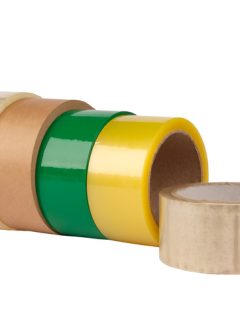Shipping biological material, such as blood, urine or swab samples, requires the highest standards of safety and regulatory compliance. For clinics, hospitals or laboratories carrying out such tasks on a daily basis, it is crucial to know how to properly prepare samples for transport so that they arrive safely, undamaged and without risk to the environment. Below, we outline proven principles for packaging medical shipments that will make the daily work of personnel responsible for transporting samples to the laboratory easier and faster.
Transporting blood samples to the laboratory – basic requirements
When sending biological material, regulations regarding sanitary safety and transport logistics must be observed. Depending on the type of samples and their potential hazard, these materials may be classified as Category B substances (UN3373) and require special labelling. In medical practice, the most common shipments are:
- blood samples,
- urine samples
- nasal, throat or wound swabs,
- tissue fragments.
Regardless of the type of material, the principles of packaging are similar – what matters is tightness, protection against mechanical damage and protection of third parties from contact with the contents.
How do I prepare blood samples for shipment?
Transporting blood samples to the laboratory is one of the most common forms of shipment in healthcare. Before you start packing, check the integrity of the tubes – each should be properly sealed and labelled. Place the tubes in ziplock bags – preferably with a separate compartment for documentation. Ziplock pouches protect the samples from contact with the environment in case of leakage and make it easier to group the material.
Next, use secondary packaging. This can be a plastic container or a hard tube that is resistant to damage and leakage. Remember to add an absorbent material, such as lignin or medical paper, which will absorb the liquid in the event of a leak. Also place warning labels on the packets in a prominent position.
What is the three-layer packaging system for genetic material?
According to WHO and PZH guidelines, a so-called three-layer packaging system is used for the transport of biological material. According to it, the following should be used:
- Primary packaging (tubes with material) – leak-proof.
- Secondary packaging (ziplock bags or plastic containers) – to protect the sample from contact with the environment.
- Outer packaging (cardboard box, box or transport case) – shock and mechanical resistant.
Cushioning materials play an extremely important role in this last layer, such as:
- bubble wrap – ideal for wrapping containers or filling empty spaces in the packaging,
- parcel filler – such as air cushions or wrapping paper, which stabilise the contents and prevent the samples from moving.
If you don’t know what to opt for, check out the comparison of filling materials for securing fragile items.
What should I look for when choosing outer packaging to pack my samples?
The outer carton should be robust and appropriately labelled. Choose packaging made of thick, 5-ply cardboard that is crush- and moisture-resistant. Cartons are available commercially in a variety of sizes to suit the needs of medical facilities. Also remember to:
- use strong packing tape resistant to temperature changes,
- mark the package with visible package warning labels, e.g. “UN3373 – Category B biological material”, “Caution – medical specimens”, “Do not throw”,
- ensure that the address of the laboratory is legible and attach the required documents (referral, sample description, patient consent).
Where to source sample packaging materials?
At Rajapack you will find a wide range of products necessary for the safe packaging of medical samples:
- zipper pouches with space for documents,
- containers and packaging for transporting biological material,
- bubble wrap and other parcel fillers,
- regulatory compliant warning labels for parcels,
- heavy-duty transport cartons.
This ensures that your facility meets all sanitary requirements and ensures the safety of patients and staff.
What else should be kept in mind when transporting blood samples to the laboratory?
The professional transport of samples to the laboratory is not only a duty, but also part of building patient confidence. Packing samples properly, using high-quality materials, minimises the risk of leakage, confusion and delays.
What’s more, there are a few rules of thumb to follow for every shipment. Firstly, send samples early in the morning so that they arrive at the laboratory the same day. Avoid sending on Fridays or before public holidays, unless the lab is working around the clock.
Secondly, choose only reliable courier companies with experience in medical transport that allow you to maintain the cold chain. If your samples require it, you can maintain the correct temperature with cooling gels and heat packs.
Remember that every sample is potentially sensitive biological material. By choosing Rajapack’s tried and tested solutions – from bubble wrap and parcel fillers to warning labels for parcels and zipper pouches – you ensure peace of mind and safety in your daily work.














